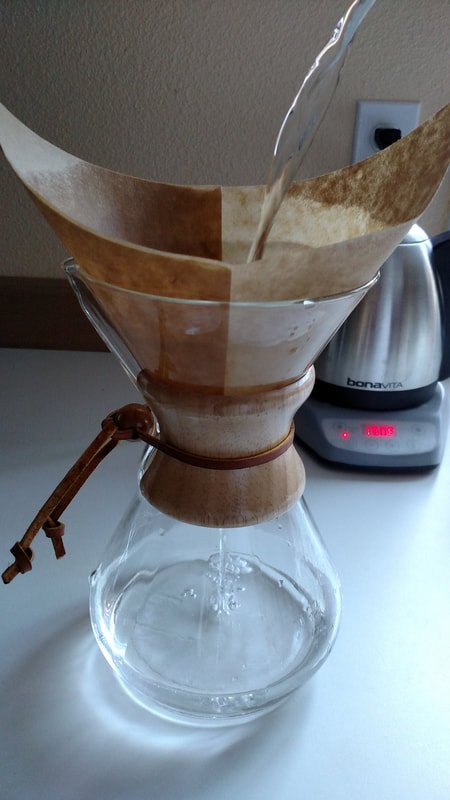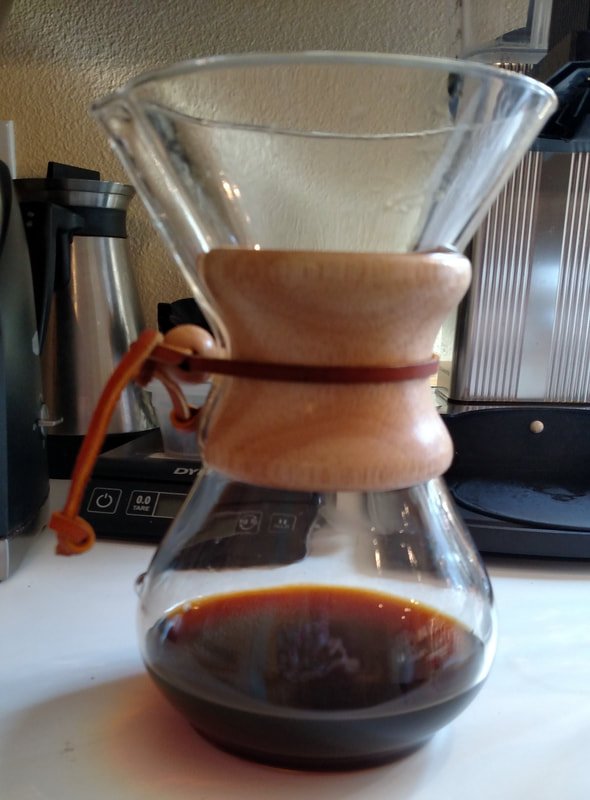The Art of Home Brewing: 3 Tips About Water
In keeping with the short series about the variables you and I have control of when brewing coffee at home, I want to share some tips about water.
Remember, our goal in brewing coffee is to be able to recreate amazing coffee every time. There is a real science surrounding water standards for brewing coffee. If you are into the science aspect of home coffee brewing, check out the water standards and characteristics as defined by the SCAA Statistics and Standards Committee here. The reality is all water is not equal. We will keep is simple, sweetie: Use fresh drawn cold filtered water. Be sure to keep to this even when using a manual or pour over brewing method.
Tip One
Draw water right before you brew your coffee. Confession: We do bend this rule slightly for the first pot of coffee of the day at our home. We do draw cold filtered water the night before into a water pitcher, so we just simply have to grind coffee and put it in the filter basket. Then we pour water in the reservoir. It keeps things simple for us before our first cup of coffee. Question: Why fresh drawn? Water will take on the taste and flavor characteristics of the container in which it is stored. Water will also take on flavors of foods in the refrigerator, especially open containers. The best way to prevent these flavor flaws is to draw water right before brewing.
Tip Two
Use cold water when filling any automatic coffee brewer. Most brewer manufacturers give instructions to start with cold water. It would stand to reason that if the instructions say to start with cold water, there must be a valid reason to start with cold water! One of the most common reasons cited is: “There is a perfect coffee extraction time to temperature ratio that is interfered with if you use warm water.” With our modern technology and devices, I don’t know how much this truly matters except that most of our modern automatic or semi-automatic brewers are programmed for the instant or rapid heating of cold tap water. Another reason often cited for using cold water is: “Cold tap water has not sat in nor been piped through the hot water heater.” Unless you have one of the new instant hot water heaters, water has sat in the hot water heater waiting to be drawn picking up flavors and collecting some extra mineral. In keeping with home brewing variable control, start with freshly drawn cold water. Remember, the goal is to consistently brew amazing coffee at home. To do this, it is best to be consistent in every step of the brewing process.
Tip Three
The biggest tip about water, though, is use filtered water. Filtered water eliminates chlorine and other additives in our municipal water sources. While these keep us from contracting preventable illnesses, they also taint the brewed coffee flavor. There are total dissolved solids (TDS) and mineral ratios along with pH and alkalinity levels that make distilled water not optimal for brewing coffee. Distilled water does not extract coffee correctly and can leave a flat mouth feel and uninspiring flavor to the coffee. Bottled water is acceptable, just be sure it is spring water and not from a municipal source. A municipal source typically is tap water. After years of using a name brand filter pitcher, we simply would go through too much water (and coffee) to keep up with the filter replacement. The pitcher also must be refilled regularly, or you are left waiting for water to filter before you can brew coffee. We solved this a few years ago when Roastmaster Jeff, who is also an engineer, did some research on good under-sink or counter mounted water filtration systems. We did convert to two filter under-sink water filtration systems simply for ease and convenience. This filtration system keeps our municipal tap water filtered of chlorine and fluoride as well as filters out excessive amounts of minerals. As we move towards a retail location, the water filtration system we choose for our shop will meet the standards given by the SCAA Statistics and Standards Committee, as mentioned above. (Yes, we are on the move again looking for a brick and mortar retail location! Woot! Woot!)
Remember, to keep it simple, sweetie:
Use water that is freshly drawn right before brewing
make sure it is from the cold water tap
be sure water run through a water filter each time you brew.
For brewing consistently good coffee at home, or the office, or anywhere really, minimized the variables you have control over. As stated before, even when using manual or pour over methods of brewing coffee, keep to your variable controlling routine.
To review, the variables we have covered so far and we have control over are: weighing coffee, being exact in measuring water by weight or by volume, and, starting our brewing routine with fresh drawn cold filtered water. You can read about starting with quality fresh roasted coffee, experimenting with the coffee to water ratio, using quality brewing and grinding equipment, as well as a few other tips along the way like rinsing paper filters one to three times before brewing in the blog post, Weight a Minute?! What Am I Weighting For?. The final two variables we will cover in the coming weeks will be: grind and time.
I would love to hear back from you. Have you made any changes to how you brew coffee at home to make it even more amazing?



